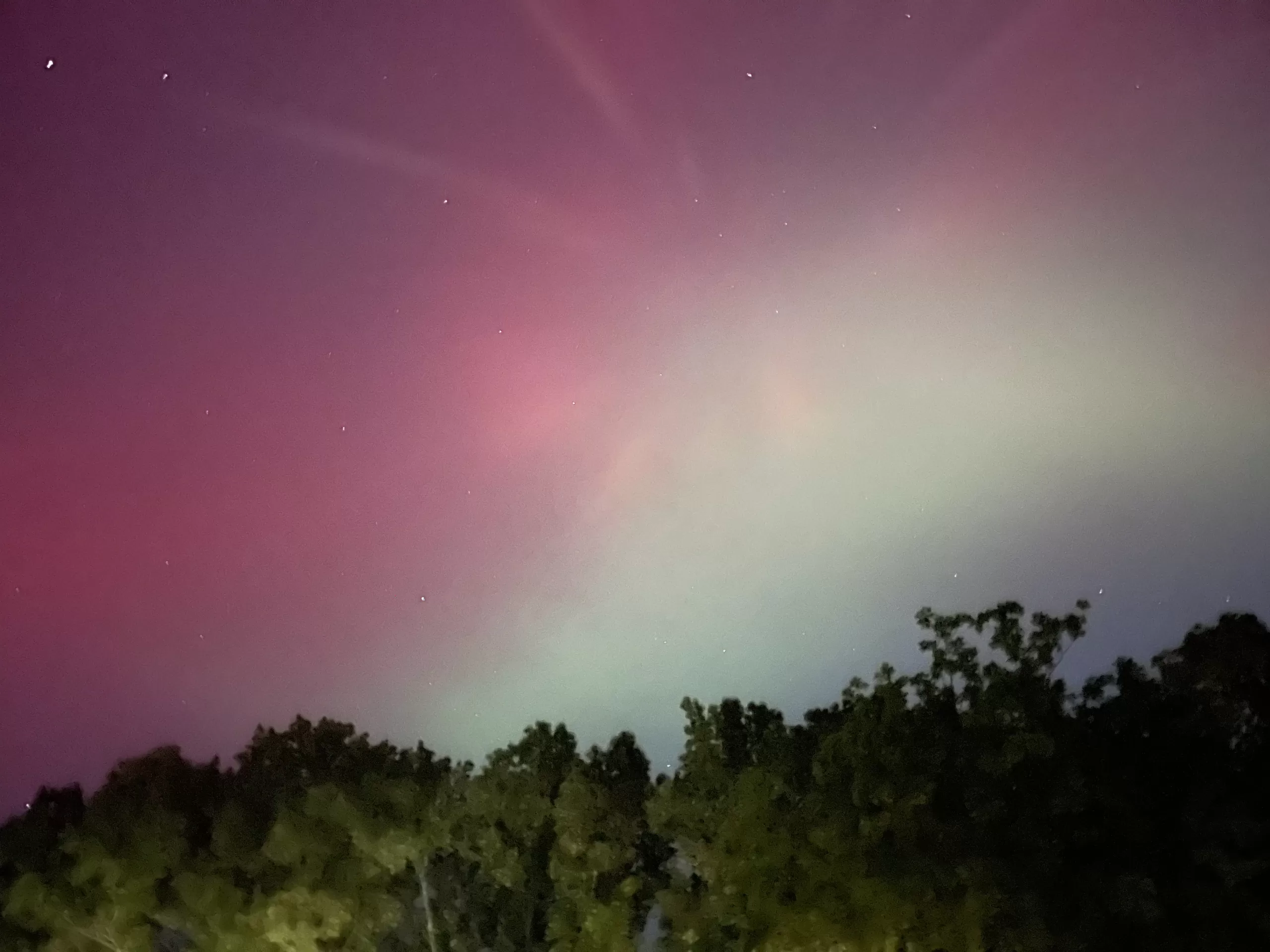Aurora Borealis Visible in Alcorn County

The celestial dance of the aurora borealis is a spectacle that captures the imagination and inspires awe. As a powerful storm graces our skies, it brings with it the chance to witness this natural wonder. Charged particles collide with atmospheric gases, creating a light show that ranges from subtle glows to vibrant streaks of green, red, and purple. The last geomagnetic storm, reached a G5 level, and made an extraordinary display visible much farther south than usual. This was a rare opportunity for those even in Corinth, Mississippi, to catch a glimpse of the aurora’s ethereal beauty.
Remember, the best time to watch is after sunset or just before sunrise, away from city lights. Embrace this moment where nature’s artistry is painted across the night sky, a reminder of the dynamic and beautiful planet we call home. For more detailed predictions and viewing tips, the NOAA Space Weather Prediction Center offers valuable resources.
The aurora borealis, or northern lights, is a mesmerizing natural light display that is predominantly seen in high latitude regions around the Arctic and Antarctic. The different colors of the aurora are caused by particles from the sun striking atoms in Earth’s atmosphere. The variations in color are due to the type of gas molecules being struck and the altitude at which they’re hit. Oxygen, at around 60 miles up, emits a green color, which is the most common hue of the aurora. At higher altitudes, around 200 miles, oxygen can produce rare, all-red auroras. Meanwhile, nitrogen can cause blue or purplish-red auroras depending on the type of collision. This interplay of solar particles and our planet’s gases creates a stunning spectrum of colors that light up the sky in an ethereal dance.





